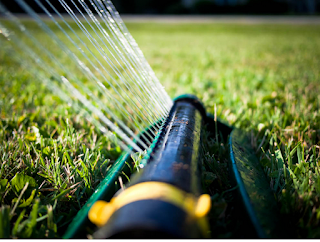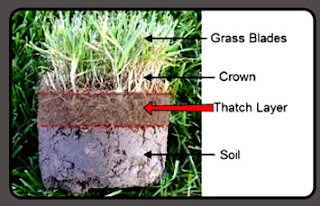With the calendar turning toward the fall months, Sunbelt Turf Farm suggests mowing your leaves for a healthier lawn.
As the temperature begins to cool down and the leaves begin to fall, our honey do list becomes longer. The new addition to our list of chores will include raking leaves, removing leaves from the yard and disposing of these leaves. Leaf removal is a big chore for many homeowners and people have come up with creative ways to make this easier, you may see your neighbors raking, blowing or even vacuuming leaves to remove them from the lawn! And it is very important to remove them from the top of the lawn. If left to sit on the lawn, these leaves will block the sunlight that the grass needs, and damp leaves will become a breeding ground for fungus that can damage your turfgrass.
As the temperature begins to cool down and the leaves begin to fall, our honey do list becomes longer. The new addition to our list of chores will include raking leaves, removing leaves from the yard and disposing of these leaves. Leaf removal is a big chore for many homeowners and people have come up with creative ways to make this easier, you may see your neighbors raking, blowing or even vacuuming leaves to remove them from the lawn! And it is very important to remove them from the top of the lawn. If left to sit on the lawn, these leaves will block the sunlight that the grass needs, and damp leaves will become a breeding ground for fungus that can damage your turfgrass.
Once you have these leaves removed from the lawn, what do you do with them? Some homeowners live in areas where the city may remove the leaves along with other yard waste to a compost site, some homeowners may have their own compost pile. Composting is a great use for organic matter, it can be used later for flower beds, gardens or even spread over your lawn. Composting helps our environment in many ways and one is keeping the raked leaves out of landfills.
The easiest way in our opinion to take care of your leaves is to mow them! Mulching your leaves has many benefits. It is a great method for weed control and studies show that mulching leaves into the turf helps the soil and the grass. The microbial activity increases in soils with mulched leaves and water infiltration is better. A study at Michigan State University showed that lawns that had leaves mulched into the turfgrass had greener grass faster and fewer dandelions in the spring. They also discovered that mulched leaves breakdown quicker if a fall fertilizer is applied. The repeated mowing needed to mulch the leaves also has benefits, it actually thickens the grass by encouraging lateral growth. People often thought that mulching leaves would thin your lawn, but studies have shown repeatedly that it will build a healthier lawn for the next year. So as you see the leaves falling don't worry about the added chores, just hang up the rake and use the mower to mulch those tree leaves into a healthier lawn!
Sunbelt Turf Farm began in St. Clair County. Over 30 years have perfected the art of growing, selling and the delivery of quality turf grass. Customer satisfaction is paramount and we stand behind our turf grass. Expansions into Shelby and Talladega Counties successfully turned cotton fields and pasture land into beautiful green turf. Commercial and retail opportunities, pick-up or delivery, free estimates, fast turnaround and remaining environmentally friendly separate us from the rest.





